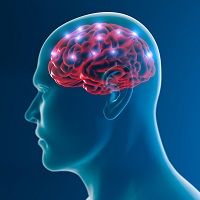Article
X-Map Imaging Useful In Stroke
Author(s):
A new tool called X-map may be useful to supplement a standard computed tomography (CT) scan, but cannot replace it in diagnosing acute cerebral infarction.

A new tool called X-map may be useful to supplement a standard computed tomography (CT) scan, but cannot replace it in diagnosing acute cerebral infarction, according to the authors of a paper recently published in the Journal of Stroke & Cerebrovascular Diseases. Kyo Noguchi, MD, PhD, of the Graduate School of Medicine and Pharmaceutical Science at the University of Toyama in Toyama, Japan, and colleagues.
Using a combination of dual-energy computed tomography (DECT) and three-material decomposition (3MD), the authors developed X-map, which they describe as “a novel imaging technique by noncontrast DECT based on 3MD that shows water content, which clearly reflects cerebral edema.” In the paper, they say they “report the preliminary results of applying the X-map imaging algorithm to identify acute ischemic stroke within 24 hours after the onset.”
Six patients participated, 4 of whom were male. The researchers say, “In all 6 patients, initial nonenhanced head DECT was performed between 30 minutes and 20 hours after the onset.” Two of the participants had DECT repeated within 4.5 hours of onset.
“In this preliminary study, the X-map clearly detected ischemic lesions, and it did so more sensitively than simulated standard CT, low kV, and high kV CT in all 6 patients with acute stage of ischemic stroke,” say the authors. They go on to say that “the most important early ischemic sign on CT is a loss of the gray-white matter interface,” and that the X-map removes the “normal difference in the attenuation level between gray matter and white matter.”
The X-map could be an important technology because “recent studies have shown that earlier thrombolytic therapy could result in better clinical outcome, but this treatment is potentially hazardous and causes fatal hemorrhagic transformation in patients with dense cerebral ischemia and/or extended tissue damage,” say the authors. Magnetic resonance imaging (MRI) is the best imaging technology for identifying lesions, however MRI is not always available, and takes longer than a normal CT scan.
“Therefore,” say the researchers, “because it is more easily accessible than MRI, the X-mpa may possibly contribute to improving the prognosis of patients with acute ischemic stroke by shortening the time for radiological screening before thrombolytic therapy.”
Although there are some limitations to the present preliminary study, the researchers conclude, “The X-map is a powerful tool to supplement simulated standard CT for characterizing acute ischemic lesions.” They suggest additional study and refinement of the algorithm is necessary.
Related Coverage:
Stroke: Clinical Judgement Equal to MRI in Detection
Intra-Arterial Treatment for Acute Ischemic Stroke
Trends in Stroke Over the Past 50 Years: The Framingham Study





